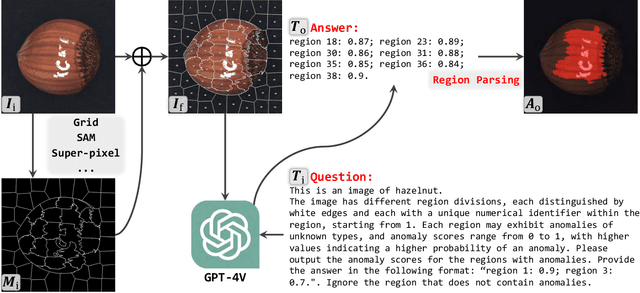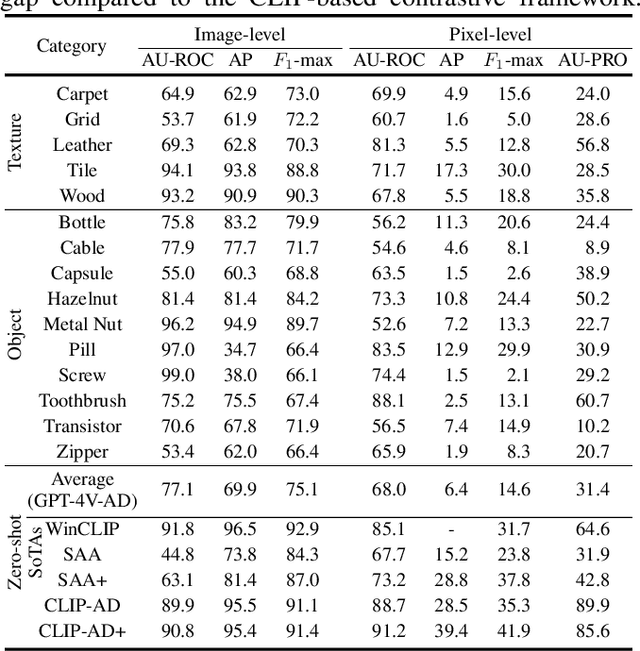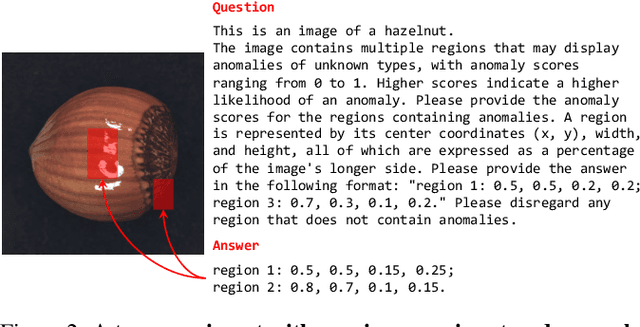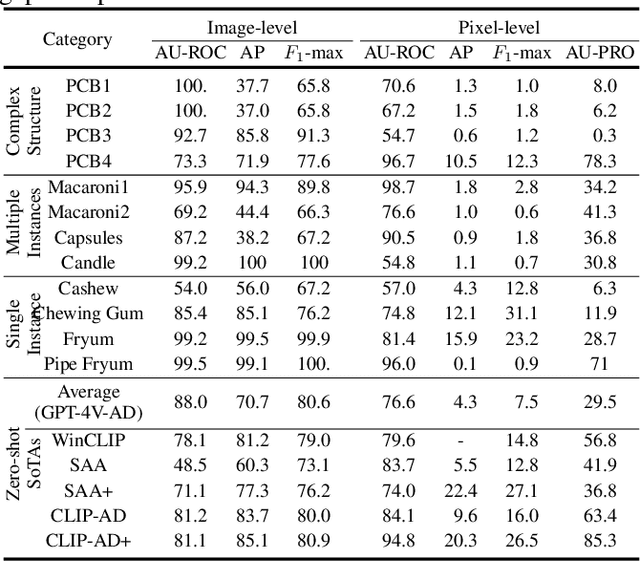Zhucun Xue
Omni-AdaVideoRAG: Omni-Contextual Adaptive Retrieval-Augmented for Efficient Long Video Understanding
Jun 16, 2025Abstract:Multimodal Large Language Models (MLLMs) struggle with long videos due to fixed context windows and weak long-term dependency modeling. Existing Retrieval-Augmented Generation (RAG) methods for videos use static retrieval strategies, leading to inefficiencies for simple queries and information loss for complex tasks. To address this, we propose AdaVideoRAG, a novel framework that dynamically adapts retrieval granularity based on query complexity using a lightweight intent classifier. Our framework employs an Omni-Knowledge Indexing module to build hierarchical databases from text (captions, ASR, OCR), visual features, and semantic graphs, enabling optimal resource allocation across tasks. We also introduce the HiVU benchmark for comprehensive evaluation. Experiments demonstrate improved efficiency and accuracy for long-video understanding, with seamless integration into existing MLLMs. AdaVideoRAG establishes a new paradigm for adaptive retrieval in video analysis. Codes will be open-sourced at https://github.com/xzc-zju/AdaVideoRAG.
UltraVideo: High-Quality UHD Video Dataset with Comprehensive Captions
Jun 16, 2025Abstract:The quality of the video dataset (image quality, resolution, and fine-grained caption) greatly influences the performance of the video generation model. The growing demand for video applications sets higher requirements for high-quality video generation models. For example, the generation of movie-level Ultra-High Definition (UHD) videos and the creation of 4K short video content. However, the existing public datasets cannot support related research and applications. In this paper, we first propose a high-quality open-sourced UHD-4K (22.4\% of which are 8K) text-to-video dataset named UltraVideo, which contains a wide range of topics (more than 100 kinds), and each video has 9 structured captions with one summarized caption (average of 824 words). Specifically, we carefully design a highly automated curation process with four stages to obtain the final high-quality dataset: \textit{i)} collection of diverse and high-quality video clips. \textit{ii)} statistical data filtering. \textit{iii)} model-based data purification. \textit{iv)} generation of comprehensive, structured captions. In addition, we expand Wan to UltraWan-1K/-4K, which can natively generate high-quality 1K/4K videos with more consistent text controllability, demonstrating the effectiveness of our data curation.We believe that this work can make a significant contribution to future research on UHD video generation. UltraVideo dataset and UltraWan models are available at https://xzc-zju.github.io/projects/UltraVideo.
Image Inversion: A Survey from GANs to Diffusion and Beyond
Feb 17, 2025Abstract:Image inversion is a fundamental task in generative models, aiming to map images back to their latent representations to enable downstream applications such as editing, restoration, and style transfer. This paper provides a comprehensive review of the latest advancements in image inversion techniques, focusing on two main paradigms: Generative Adversarial Network (GAN) inversion and diffusion model inversion. We categorize these techniques based on their optimization methods. For GAN inversion, we systematically classify existing methods into encoder-based approaches, latent optimization approaches, and hybrid approaches, analyzing their theoretical foundations, technical innovations, and practical trade-offs. For diffusion model inversion, we explore training-free strategies, fine-tuning methods, and the design of additional trainable modules, highlighting their unique advantages and limitations. Additionally, we discuss several popular downstream applications and emerging applications beyond image tasks, identifying current challenges and future research directions. By synthesizing the latest developments, this paper aims to provide researchers and practitioners with a valuable reference resource, promoting further advancements in the field of image inversion. We keep track of the latest works at https://github.com/RyanChenYN/ImageInversion
Improving Autoregressive Visual Generation with Cluster-Oriented Token Prediction
Jan 01, 2025



Abstract:Employing LLMs for visual generation has recently become a research focus. However, the existing methods primarily transfer the LLM architecture to visual generation but rarely investigate the fundamental differences between language and vision. This oversight may lead to suboptimal utilization of visual generation capabilities within the LLM framework. In this paper, we explore the characteristics of visual embedding space under the LLM framework and discover that the correlation between visual embeddings can help achieve more stable and robust generation results. We present IAR, an Improved AutoRegressive Visual Generation Method that enhances the training efficiency and generation quality of LLM-based visual generation models. Firstly, we propose a Codebook Rearrangement strategy that uses balanced k-means clustering algorithm to rearrange the visual codebook into clusters, ensuring high similarity among visual features within each cluster. Leveraging the rearranged codebook, we propose a Cluster-oriented Cross-entropy Loss that guides the model to correctly predict the cluster where the token is located. This approach ensures that even if the model predicts the wrong token index, there is a high probability the predicted token is located in the correct cluster, which significantly enhances the generation quality and robustness. Extensive experiments demonstrate that our method consistently enhances the model training efficiency and performance from 100M to 1.4B, reducing the training time by half while achieving the same FID. Additionally, our approach can be applied to various LLM-based visual generation models and adheres to the scaling law, providing a promising direction for future research in LLM-based visual generation.
EMOv2: Pushing 5M Vision Model Frontier
Dec 09, 2024



Abstract:This work focuses on developing parameter-efficient and lightweight models for dense predictions while trading off parameters, FLOPs, and performance. Our goal is to set up the new frontier of the 5M magnitude lightweight model on various downstream tasks. Inverted Residual Block (IRB) serves as the infrastructure for lightweight CNNs, but no counterparts have been recognized by attention-based design. Our work rethinks the lightweight infrastructure of efficient IRB and practical components in Transformer from a unified perspective, extending CNN-based IRB to attention-based models and abstracting a one-residual Meta Mobile Block (MMBlock) for lightweight model design. Following neat but effective design criterion, we deduce a modern Improved Inverted Residual Mobile Block (i2RMB) and improve a hierarchical Efficient MOdel (EMOv2) with no elaborate complex structures. Considering the imperceptible latency for mobile users when downloading models under 4G/5G bandwidth and ensuring model performance, we investigate the performance upper limit of lightweight models with a magnitude of 5M. Extensive experiments on various vision recognition, dense prediction, and image generation tasks demonstrate the superiority of our EMOv2 over state-of-the-art methods, e.g., EMOv2-1M/2M/5M achieve 72.3, 75.8, and 79.4 Top-1 that surpass equal-order CNN-/Attention-based models significantly. At the same time, EMOv2-5M equipped RetinaNet achieves 41.5 mAP for object detection tasks that surpasses the previous EMO-5M by +2.6. When employing the more robust training recipe, our EMOv2-5M eventually achieves 82.9 Top-1 accuracy, which elevates the performance of 5M magnitude models to a new level. Code is available at https://github.com/zhangzjn/EMOv2.
ADer: A Comprehensive Benchmark for Multi-class Visual Anomaly Detection
Jun 06, 2024Abstract:Visual anomaly detection aims to identify anomalous regions in images through unsupervised learning paradigms, with increasing application demand and value in fields such as industrial inspection and medical lesion detection. Despite significant progress in recent years, there is a lack of comprehensive benchmarks to adequately evaluate the performance of various mainstream methods across different datasets under the practical multi-class setting. The absence of standardized experimental setups can lead to potential biases in training epochs, resolution, and metric results, resulting in erroneous conclusions. This paper addresses this issue by proposing a comprehensive visual anomaly detection benchmark, \textbf{\textit{ADer}}, which is a modular framework that is highly extensible for new methods. The benchmark includes multiple datasets from industrial and medical domains, implementing fifteen state-of-the-art methods and nine comprehensive metrics. Additionally, we have open-sourced the GPU-assisted \href{https://pypi.org/project/ADEval}{ADEval} package to address the slow evaluation problem of metrics like time-consuming mAU-PRO on large-scale data, significantly reducing evaluation time by more than \textit{1000-fold}. Through extensive experimental results, we objectively reveal the strengths and weaknesses of different methods and provide insights into the challenges and future directions of multi-class visual anomaly detection. We hope that \textbf{\textit{ADer}} will become a valuable resource for researchers and practitioners in the field, promoting the development of more robust and generalizable anomaly detection systems. Full codes have been attached in Appendix and open-sourced at \url{https://github.com/zhangzjn/ader}.
Learning Feature Inversion for Multi-class Anomaly Detection under General-purpose COCO-AD Benchmark
Apr 16, 2024



Abstract:Anomaly detection (AD) is often focused on detecting anomaly areas for industrial quality inspection and medical lesion examination. However, due to the specific scenario targets, the data scale for AD is relatively small, and evaluation metrics are still deficient compared to classic vision tasks, such as object detection and semantic segmentation. To fill these gaps, this work first constructs a large-scale and general-purpose COCO-AD dataset by extending COCO to the AD field. This enables fair evaluation and sustainable development for different methods on this challenging benchmark. Moreover, current metrics such as AU-ROC have nearly reached saturation on simple datasets, which prevents a comprehensive evaluation of different methods. Inspired by the metrics in the segmentation field, we further propose several more practical threshold-dependent AD-specific metrics, ie, m$F_1$$^{.2}_{.8}$, mAcc$^{.2}_{.8}$, mIoU$^{.2}_{.8}$, and mIoU-max. Motivated by GAN inversion's high-quality reconstruction capability, we propose a simple but more powerful InvAD framework to achieve high-quality feature reconstruction. Our method improves the effectiveness of reconstruction-based methods on popular MVTec AD, VisA, and our newly proposed COCO-AD datasets under a multi-class unsupervised setting, where only a single detection model is trained to detect anomalies from different classes. Extensive ablation experiments have demonstrated the effectiveness of each component of our InvAD. Full codes and models are available at https://github.com/zhangzjn/ader.
Exploring Grounding Potential of VQA-oriented GPT-4V for Zero-shot Anomaly Detection
Nov 05, 2023



Abstract:Large Multimodal Model (LMM) GPT-4V(ision) endows GPT-4 with visual grounding capabilities, making it possible to handle certain tasks through the Visual Question Answering (VQA) paradigm. This paper explores the potential of VQA-oriented GPT-4V in the recently popular visual Anomaly Detection (AD) and is the first to conduct qualitative and quantitative evaluations on the popular MVTec AD and VisA datasets. Considering that this task requires both image-/pixel-level evaluations, the proposed GPT-4V-AD framework contains three components: 1) Granular Region Division, 2) Prompt Designing, 3) Text2Segmentation for easy quantitative evaluation, and have made some different attempts for comparative analysis. The results show that GPT-4V can achieve certain results in the zero-shot AD task through a VQA paradigm, such as achieving image-level 77.1/88.0 and pixel-level 68.0/76.6 AU-ROCs on MVTec AD and VisA datasets, respectively. However, its performance still has a certain gap compared to the state-of-the-art zero-shot method, e.g., WinCLIP ann CLIP-AD, and further research is needed. This study provides a baseline reference for the research of VQA-oriented LMM in the zero-shot AD task, and we also post several possible future works. Code is available at \url{https://github.com/zhangzjn/GPT-4V-AD}.
Reference Twice: A Simple and Unified Baseline for Few-Shot Instance Segmentation
Jan 10, 2023Abstract:Few Shot Instance Segmentation (FSIS) requires models to detect and segment novel classes with limited several support examples. In this work, we explore a simple yet unified solution for FSIS as well as its incremental variants, and introduce a new framework named Reference Twice (RefT) to fully explore the relationship between support/query features based on a Transformer-like framework. Our key insights are two folds: Firstly, with the aid of support masks, we can generate dynamic class centers more appropriately to re-weight query features. Secondly, we find that support object queries have already encoded key factors after base training. In this way, the query features can be enhanced twice from two aspects, i.e., feature-level and instance-level. In particular, we firstly design a mask-based dynamic weighting module to enhance support features and then propose to link object queries for better calibration via cross-attention. After the above steps, the novel classes can be improved significantly over our strong baseline. Additionally, our new framework can be easily extended to incremental FSIS with minor modification. When benchmarking results on the COCO dataset for FSIS, gFSIS, and iFSIS settings, our method achieves a competitive performance compared to existing approaches across different shots, e.g., we boost nAP by noticeable +8.2/+9.4 over the current state-of-the-art FSIS method for 10/30-shot. We further demonstrate the superiority of our approach on Few Shot Object Detection. Code and model will be available.
Rethinking Mobile Block for Efficient Neural Models
Jan 10, 2023



Abstract:This paper focuses on designing efficient models with low parameters and FLOPs for dense predictions. Even though CNN-based lightweight methods have achieved stunning results after years of research, trading-off model accuracy and constrained resources still need further improvements. This work rethinks the essential unity of efficient Inverted Residual Block in MobileNetv2 and effective Transformer in ViT, inductively abstracting a general concept of Meta-Mobile Block, and we argue that the specific instantiation is very important to model performance though sharing the same framework. Motivated by this phenomenon, we deduce a simple yet efficient modern \textbf{I}nverted \textbf{R}esidual \textbf{M}obile \textbf{B}lock (iRMB) for mobile applications, which absorbs CNN-like efficiency to model short-distance dependency and Transformer-like dynamic modeling capability to learn long-distance interactions. Furthermore, we design a ResNet-like 4-phase \textbf{E}fficient \textbf{MO}del (EMO) based only on a series of iRMBs for dense applications. Massive experiments on ImageNet-1K, COCO2017, and ADE20K benchmarks demonstrate the superiority of our EMO over state-of-the-art methods, \eg, our EMO-1M/2M/5M achieve 71.5, 75.1, and 78.4 Top-1 that surpass \textbf{SoTA} CNN-/Transformer-based models, while trading-off the model accuracy and efficiency well. Code: \url{https://github.com/zhangzjn/EMO}
 Add to Chrome
Add to Chrome Add to Firefox
Add to Firefox Add to Edge
Add to Edge